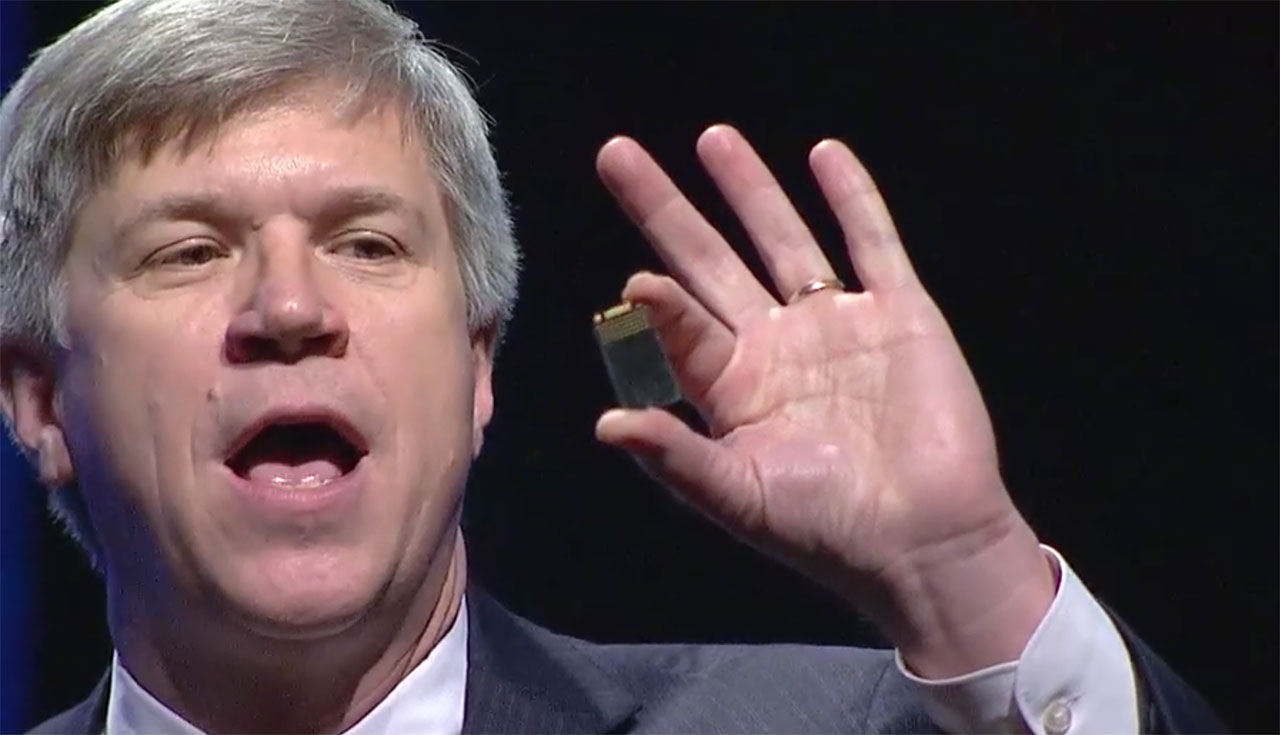Intel talks 3D NAND for higher capacities and lower cost

Rob Crooke took the stage at Intel's IDF Shenzhen conference to discuss upcoming storage technologies, and he had some exciting things to say. While 3D XPoint and Optane SSDs are interesting, we're not expecting them to be priced affordably—at least not initially. 3D NAND is a different matter.
Crooke started with a discussion of Intel's 3D NAND, which is similar to Samsung's V-NAND. By using a mature process technology and stacking NAND die, 3D NAND is able to improve endurance and increase capacity in a much smaller form factor. Intel also mentions cost as a driving factor, which is always good to hear.
Intel's first 3D NAND has 32 layers with four billion "pillars" of stacked NAND, which equates to 128Gbit of raw capacity. Using TLC NAND (three bits per cell), that yields 384Gbit/48GB per die. By next year, Intel says they will be able to store over 1TB of information in a chip that's only 1.5mm thick, presumably by increasing the number of layers as well as the density of the NAND (i.e., number of "pillars").
While it wasn't stated what sort of package we were looking at, it looks to be an M.2 2240, which is half the size of the typical M.2 2280 we usually see in laptops. But what if you don't care about a tiny form factor? Intel will be able to store up to 15TB of data in a 2.5-inch drive. For the server world, that means an almost ludicrous 1PB (i.e., 1000TB) in a 1U rack.
The biggest gaming news, reviews and hardware deals
Keep up to date with the most important stories and the best deals, as picked by the PC Gamer team.
Jarred's love of computers dates back to the dark ages when his dad brought home a DOS 2.3 PC and he left his C-64 behind. He eventually built his first custom PC in 1990 with a 286 12MHz, only to discover it was already woefully outdated when Wing Commander was released a few months later. He holds a BS in Computer Science from Brigham Young University and has been working as a tech journalist since 2004, writing for AnandTech, Maximum PC, and PC Gamer. From the first S3 Virge '3D decelerators' to today's GPUs, Jarred keeps up with all the latest graphics trends and is the one to ask about game performance.


